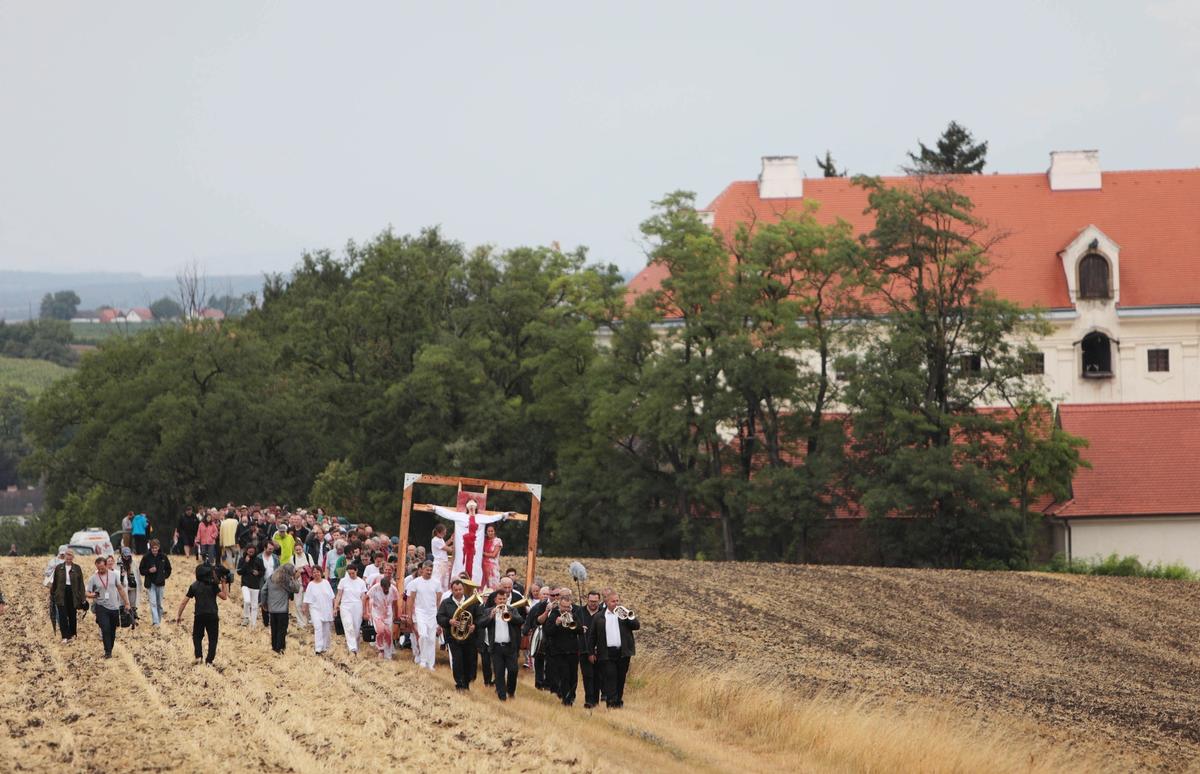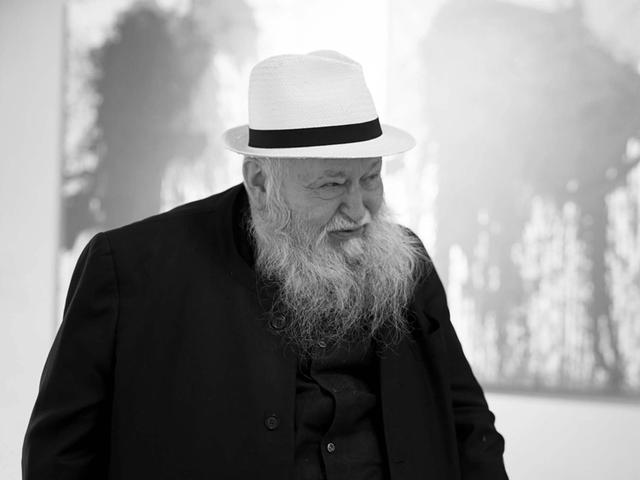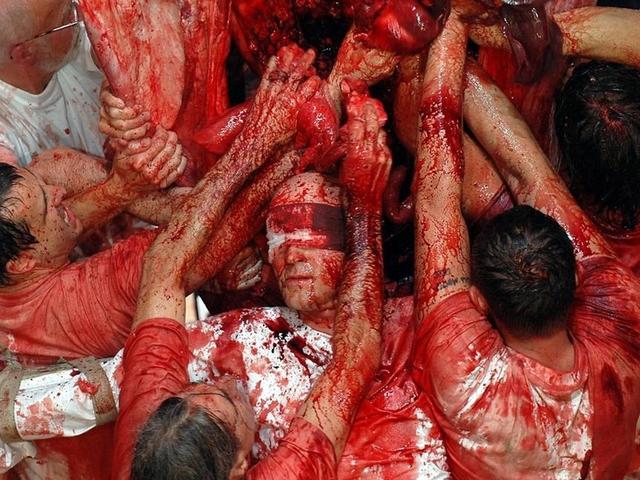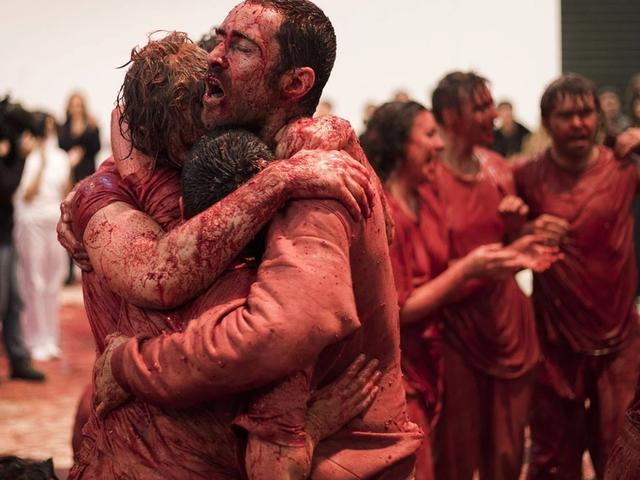Nothing prepared me for the retch-inducing scent of gushing blood at Hermann Nitsch’s posthumous performance at the Prinzendorf castle, the late artist’s estate in Lower Austria. Even when paired with incense-burners from Nitsch’s olfactory lab, it smelled like death, both deeply familiar and unconscious. These jarring confrontations, melding the sublime and the depraved, represent the fundamental ways in which the founding father of Viennese Actionism—a radical, yet short-lived movement from the 1960s—did his work.
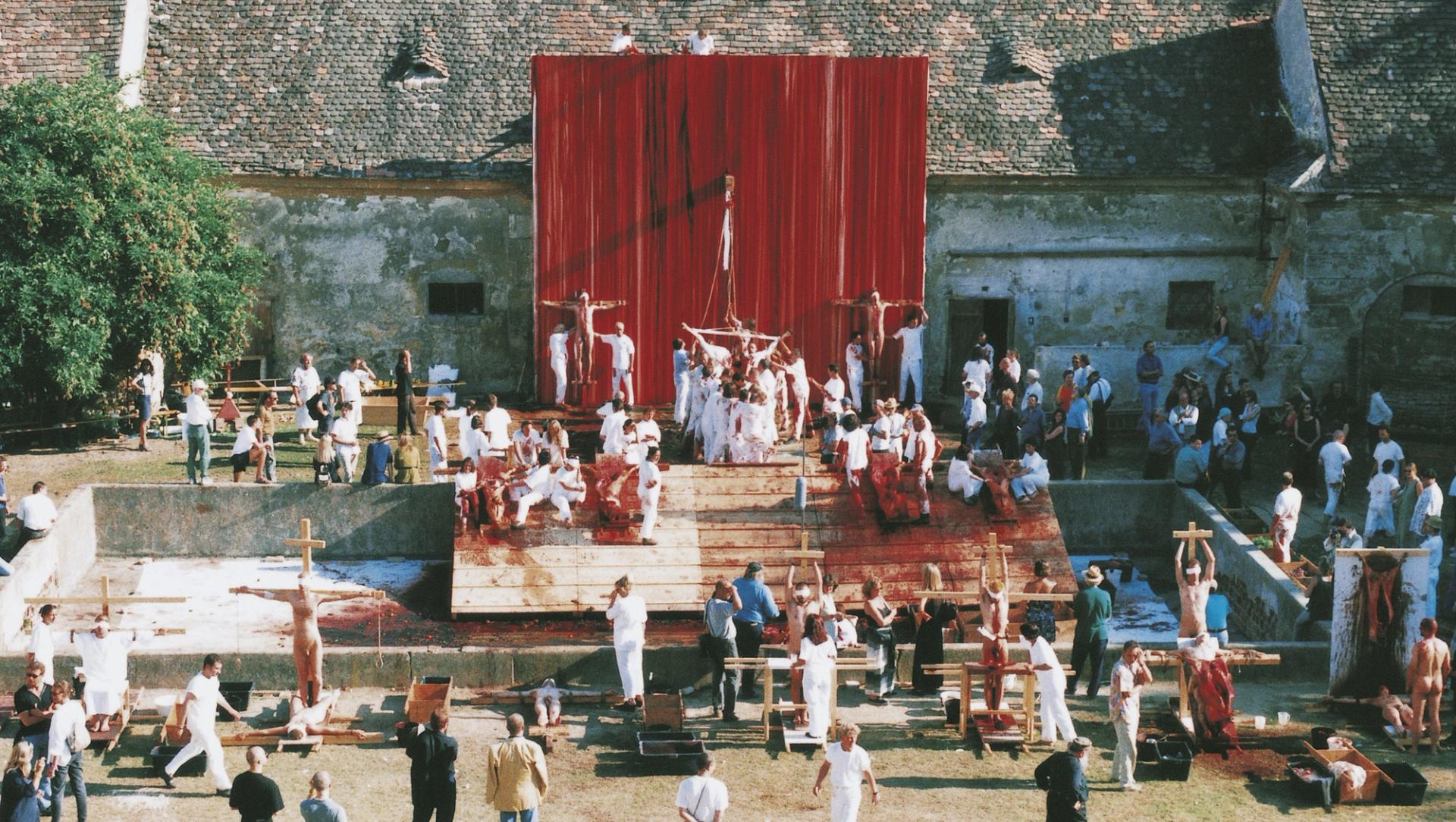
Hermann Nitsch and the Orgies Mysteries Theater's 6-Day Play (1998) Courtesy of the Nitsch Foundation
Over two days from 30 July, we witnessed Nitsch’s "160th action", part of Das Orgien Mysterien Theatre productions, under which all his performances have been categorised since 1962. The play is a second version of his magnum opus, 6-Day-Play, based on a 1957 concept performed in 1998 with 500 actors, three orchestras, a chamber music group—and a butcher. According to those who witnessed the original, the 2022 iteration—with 100 musicians and 50 performers—a number that dwindled as some participants left—was a dimmer affair. “In 1998, it was a real scandal,” an unassuming man in faded black clothes told me.
In Nitsch's theatre, "orgies", as a term, is meant to be sensory rather than sexual. In the original staging of 6-Day Play—"a holy festival" as he puts it—Nitsch directed an awakening of the senses through agitation, tragedy and ecstasy in what he considers an eternal cycle of existence in all its mystical glory of "becoming and passing". Gudrun Maracek, the managing director of the Nitsch Foundation that staged the latest version, says that “sacrificial rituals have always played a major role in Nitsch's work". She adds: “The crucifixion, the killing and the castration are presented in a performative way, like living sculptures. In the same way as a leitmotif is repeated in musical scores, the performative leitmotifs are repeated as well.”
These leitmotifs, which have led to three jail sentences in Austria, no longer feature the live slaughter and dismemberment of lambs and bulls (thanks to animal rights activists), or performative self-mutilation. With two museums that carry his name (in Mistelbach and Naples), prestigious roles as an opera designer, and joining Pace gallery earlier this year, Nitsch’s work has become more culturally legitimised. The police are no longer at the gates, as it were.
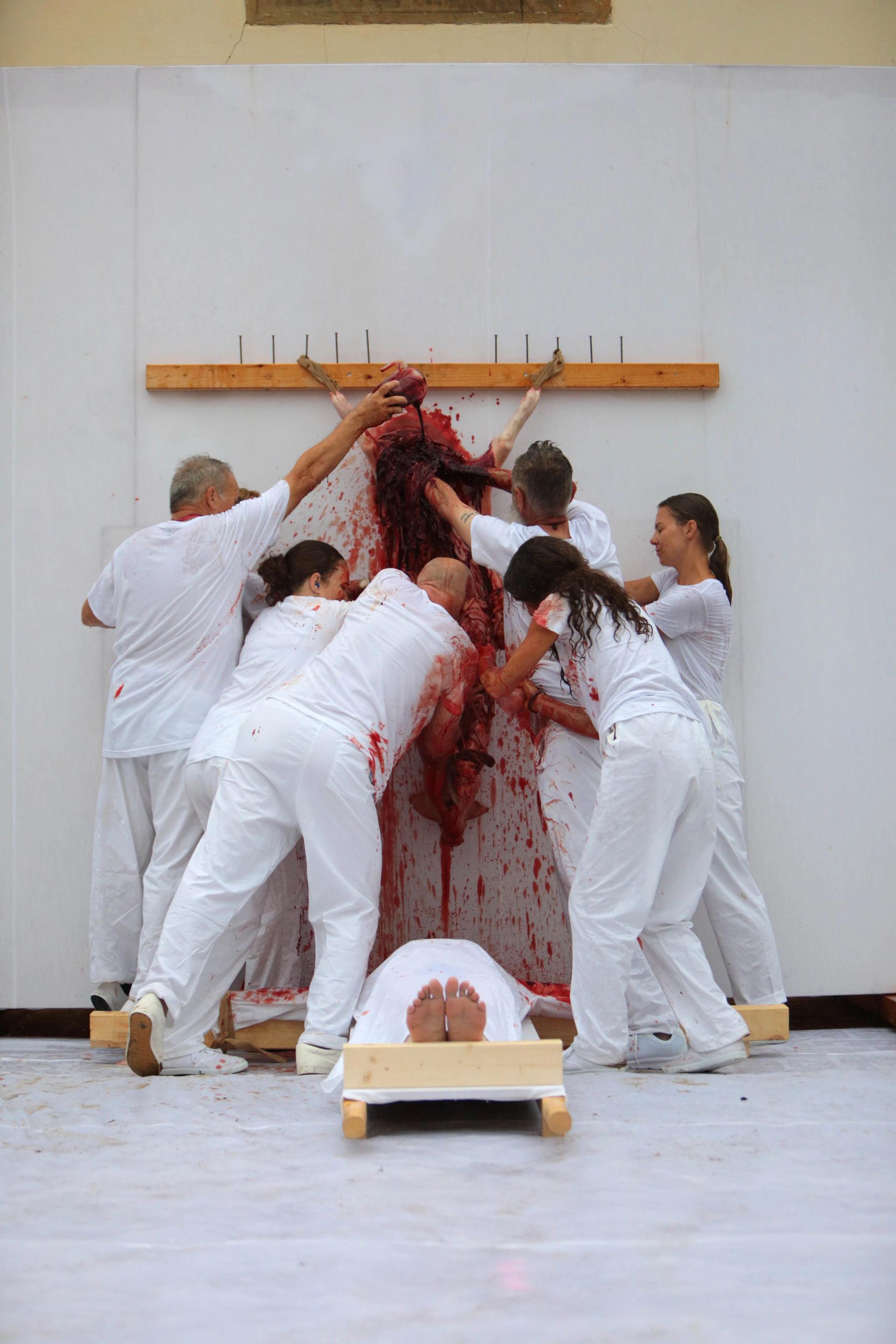
Hermann Nitsch and the Orgies Mysteries Theater's 6-Day Play (2022), day 1 Photo: © Hermann Nitsch GmbH, photo: FEYERL
Still, there was a cultish feel to the crowd, many of whom proudly retained their blood-splattered clothes, which recalls Nitsch's 1998 wry request that viewers "wear reasonable, timeless clothes". The punks, hipsters and well-heeled European collectors included his biggest Italian supporter, Giuseppe Mora; the bat-eating Russian performance artist Petr Davydtchenko; and subversive Infinity Land Press publisher Karolina Urbaniak, who, along with author Audrey Szasz, sported an unmistakeable Addams Family aesthetic.

Hermann Nitsch and the Orgies Mysteries Theater's 6-Day Play (2022), day 1 Photo: © Hermann Nitsch GmbH, photo: FEYERL
There were eerie moments. Blindfolded men and women took on durational crucifixion postures as rivers of blood streamed down their mouths. Cannibal-like groups frantically scooped up entrails inside disemboweled carcasses of pigs to the deafening roar of a noisy orchestra. The work had all the feeling of a live, folk-horror movie with viewer and participant occupying the same space. Without any real distance from the stage—which was everywhere—it was impossible to remain indifferent or untouched.
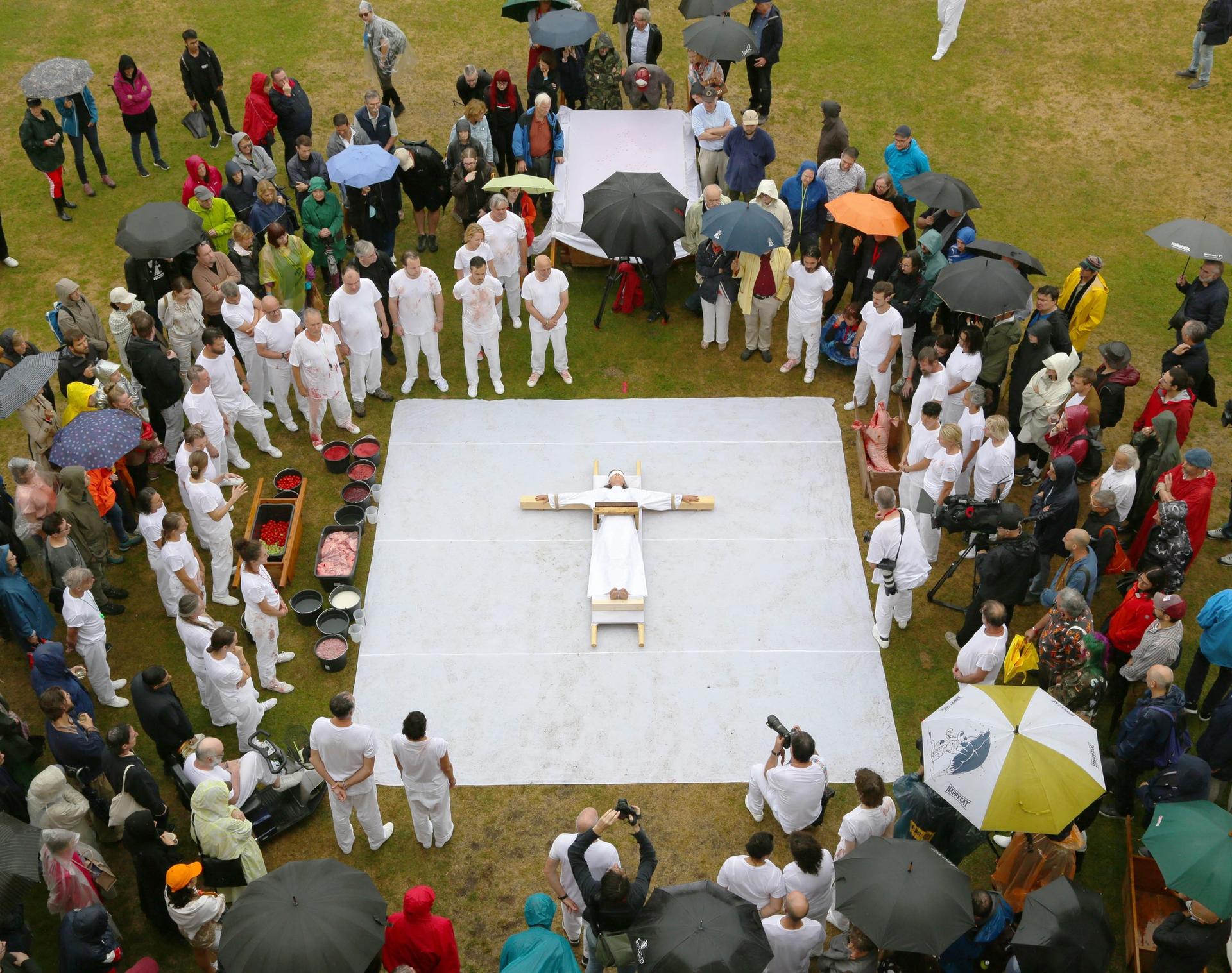
Hermann Nitsch and the Orgies Mysteries Theater's 6-Day Play (2022), day 1 Photo: © Hermann Nitsch GmbH, photo: FEYERL
At points the suppliant human lying underneath the butchered pig became a hybrid being with innards exposed. I asked myself whether, at a price of €400 for an all-inclusive weekend ticket (and €300 for a day or for students), this was intended for a cultural elite who wanted to feel something extreme or have fetishes fulfilled. For others it might have been more spiritual than that, a kind of pilgrimage: all the performers were unpaid volunteers, for example, who willingly played active or passive roles—such as Elke Biesendorfer, whose parents were part of the 1998 version.
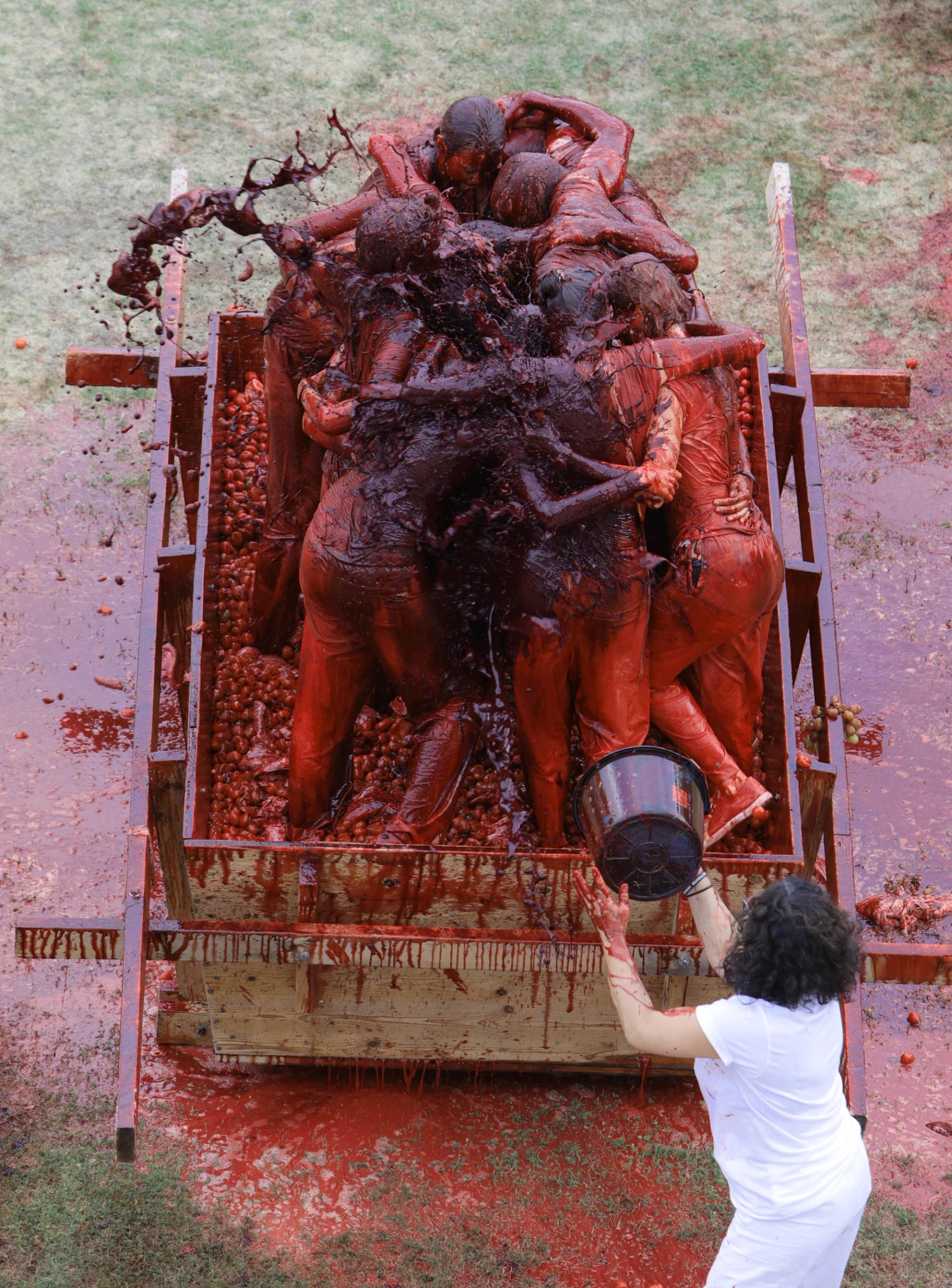
Hermann Nitsch and the Orgies Mysteries Theater's 6-Day Play (2022), day 2 Photo: © Hermann Nitsch GmbH, photo: FEYERL
Over the two days, an estimated 3,000 flowers, 6,000 litres of wine, 1,000 litres of blood, and 3 tonnes each of tomatoes and grapes were used. Working on a monumental scale, Nitsch was a manager of excess. More fundamentally, he was a composer, a creator of elaborate, colour-coded musical scores, and a kind of dramaturgy without text—the only script being his exacting instructions. The shrill whistle of Nitsch’s adopted son Leonhard Kopp, clanging church bells, and a brass band playing folk music punctuated all the movement.
Animal bodies and their entrails became like painting tools. The resulting choreography assaulted the senses (aurally, visually and materially) in the kind of overload that is needed to overcome our basest desires and repulsions, or reach catharsis, according to Nitsch. A totalising experience, with performative actions unfolding simultaneously, this Nitsch’s work is often likened to Wagner’s concept of Gesamtkunstwerk.
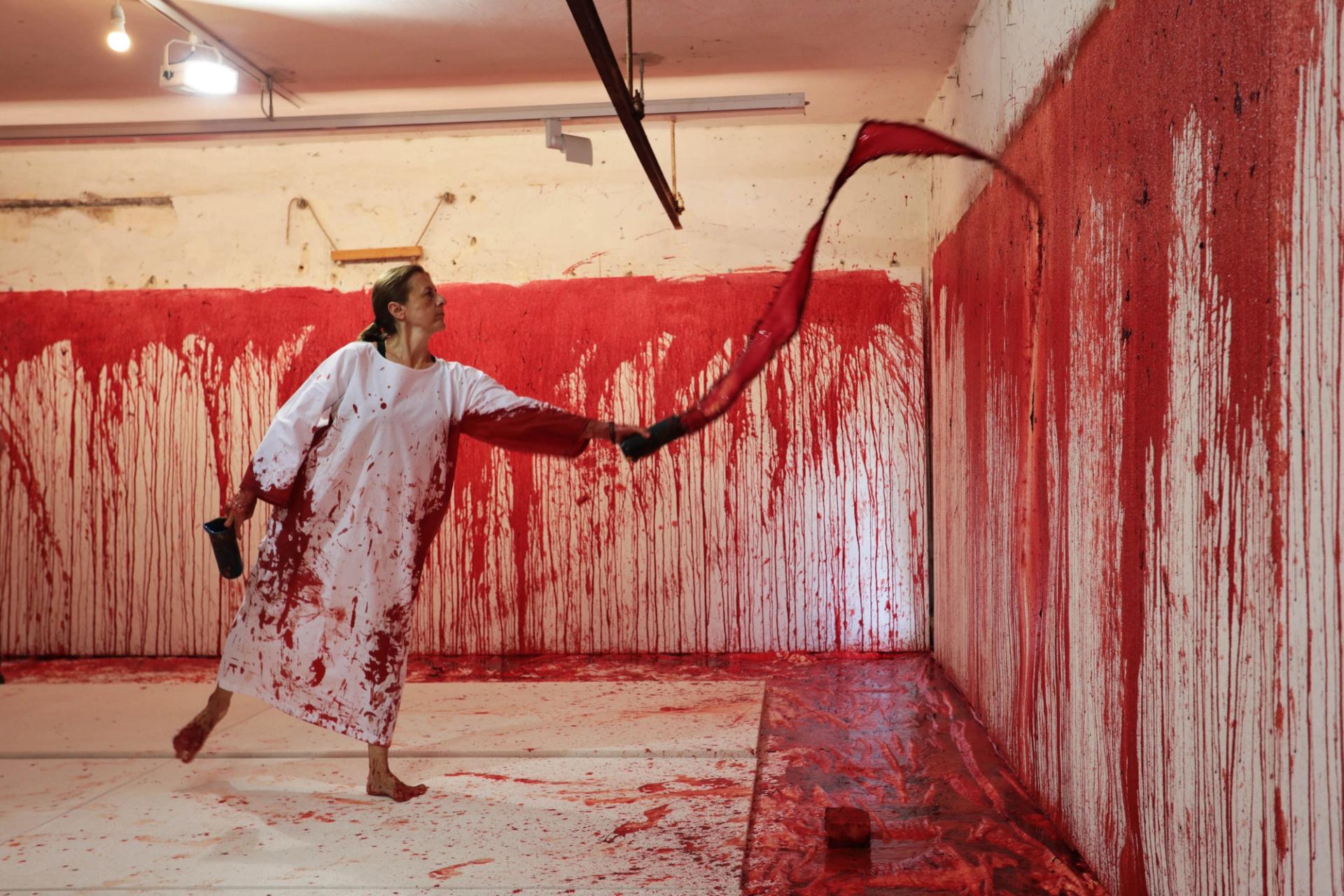
Hermann Nitsch and the Orgies Mysteries Theater's 6-Day Play (2022), day 2 Photo: © Hermann Nitsch GmbH, photo: FEYERL
“In the 1950s, Nitsch wanted to write drama for the stage but then he realised his intention couldn’t be fulfilled with the spoken word,” says Hubert Klocker, the curator and scholar of Viennese Actionism, who met Nitsch when he was 19, assisting in his first 24-hour performance in 1975. “We cannot talk about what we are seeing here because there are no words for it,” Gernot Dolezal adds. He began collecting works by Nitsch 20 years ago, at first appalled by what he couldn’t understand. He explains that he felt this "direct art" was of importance even if he was opposed to it then, framing it within Marcel Duchamp’s non-representational aesthetic. Gunther Jaegers, on the other hand—who exhibited his collection of nearly 100 Nitsch works in 2021 at Kunsthalle Jesuitenkirche in Aschaffenburg—compares Nitsch's work to Joseph Beuys’s social sculpture. “Beuys was political; he was trying to change something. While Nitsch was simply being,” he says. Remembering his own performance in 1998, Florian Nahrer—Nitsch’s former studio assistant—says: “Nitsch used to say you cannot understand it without being drunk. You could dig into things you aren’t allowed to touch, joyfully like a child. Catharsis can happen in this way, with all the alcohol that’s necessary."
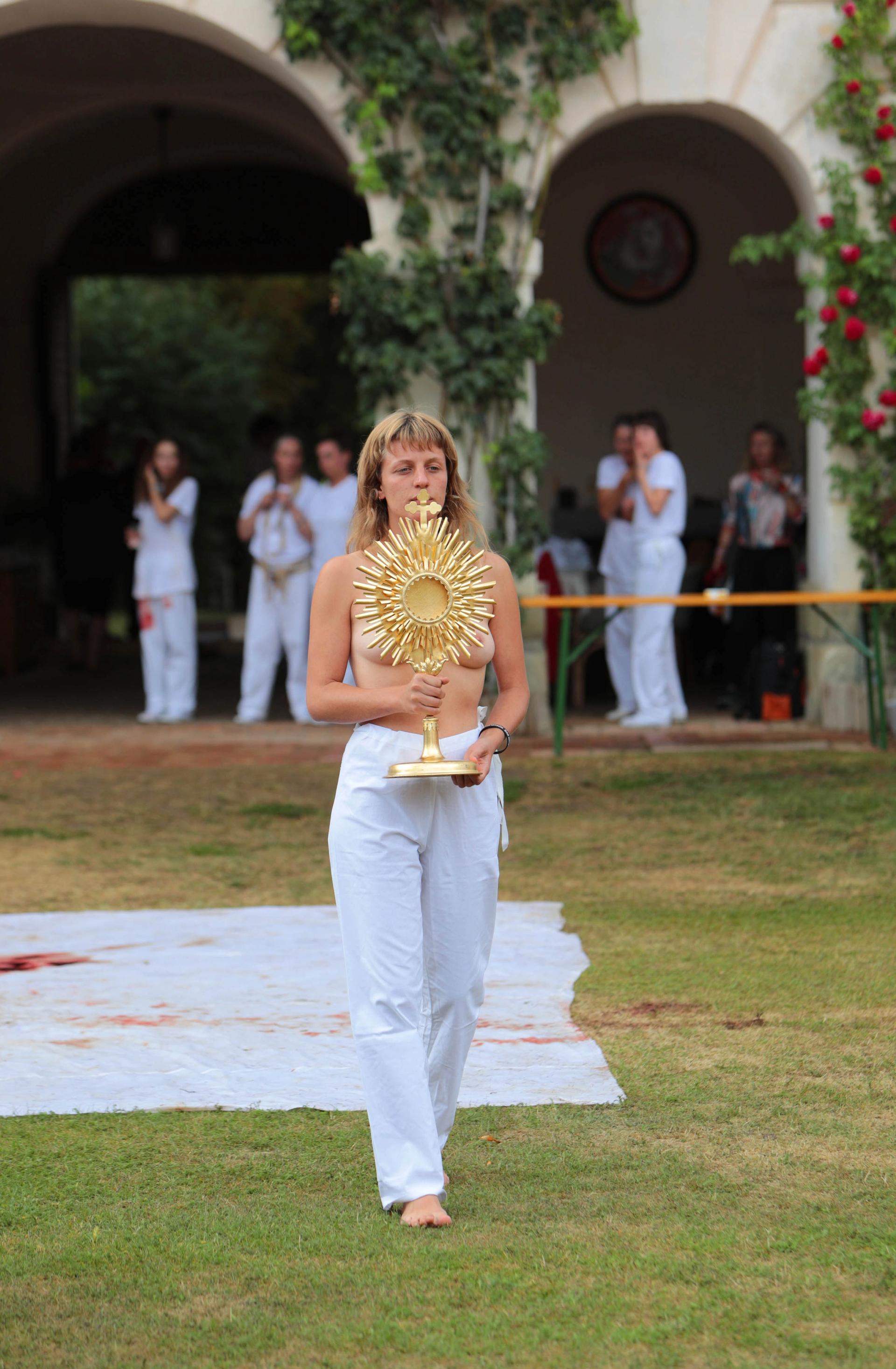
Hermann Nitsch and the Orgies Mysteries Theater's 6-Day Play (2022), day 1 Photo: © Hermann Nitsch GmbH, photo: FEYERL
Intoxication aside, there were surprising moments of morbid beauty in the performance: the art student Alina Trionow serenely carrying a gold monstrance; grapes and guts arranged on a tablecloth like nature morte; faded blood abstracted against white canvas; and parallel lines of colour poured from windows (a reminder of Nitsch’s very last achievement: a stage set for Wagner’s Valkyrie at the Bayreuth Festival). But for me, the real pinnacle of this Greek-tragedy-meets-decadent-feast was the "rugby" performance. A bacchanalian group—knees-deep in a trough of fruits, organs and fluids—huddled together while others poured blood and flung entrails over them. Enacting the grape-stomping of traditional wine-making, their blood-soaked faces expressed everything from collective despair to euphoria. In a particularly unsettling vignette, a disabled, ecstatic middle-aged man writhed in the lap of a beautiful woman.
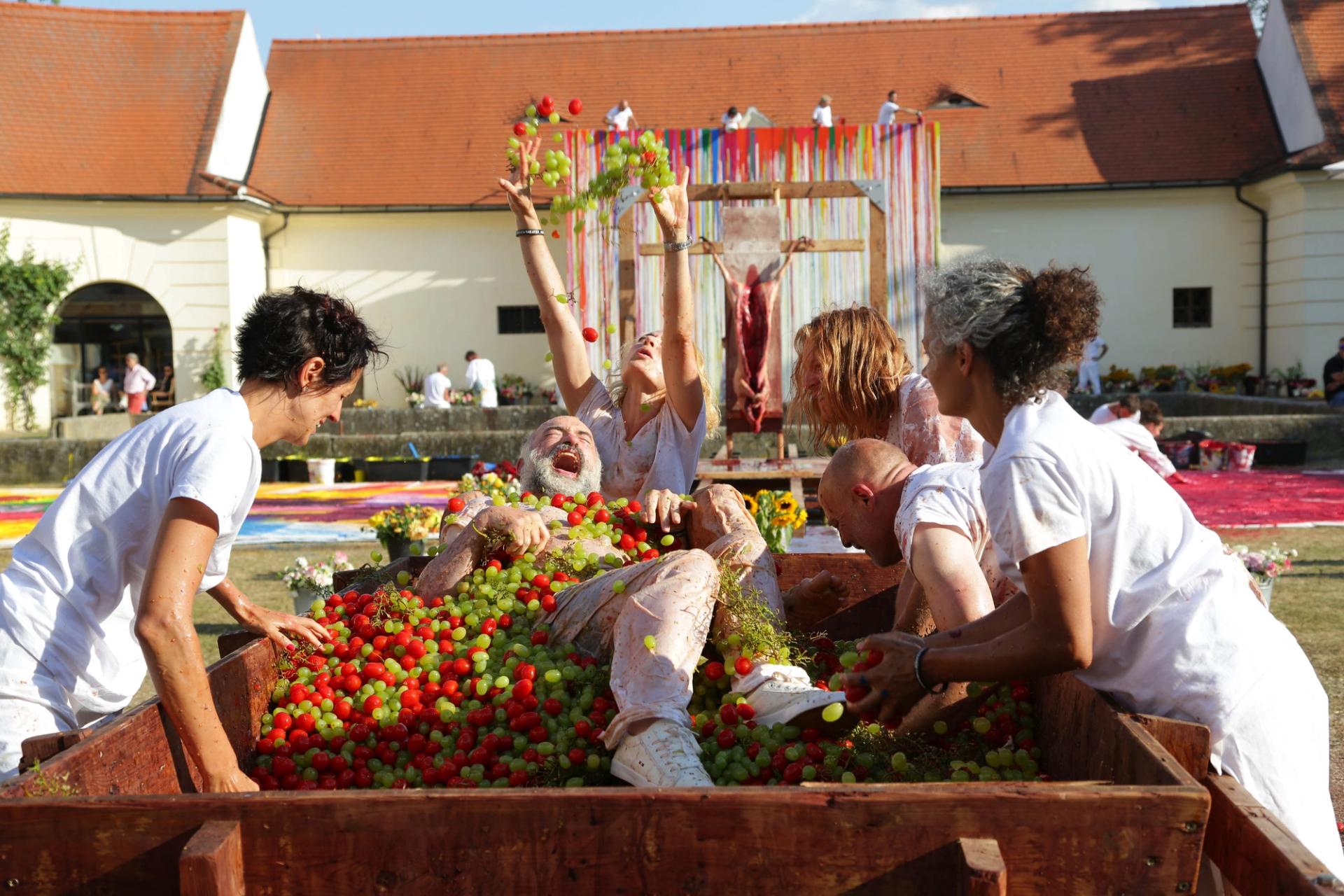
Hermann Nitsch and the Orgies Mysteries Theater's 6-Day Play (2022), day 2 Photo: © Hermann Nitsch GmbH, photo: FEYERL
Even for those who don’t connect to the Christian fervour and Eucharist symbolism, there is something profoundly primal about Nitsch’s ritualistic acts for the stage, which culminate in a crescendo that offers a glimpse of cyclicality of life and its metamorphosis. The question that remains is: is the artist who brought in a new concept of performance to Viennese high society, still relevant today?
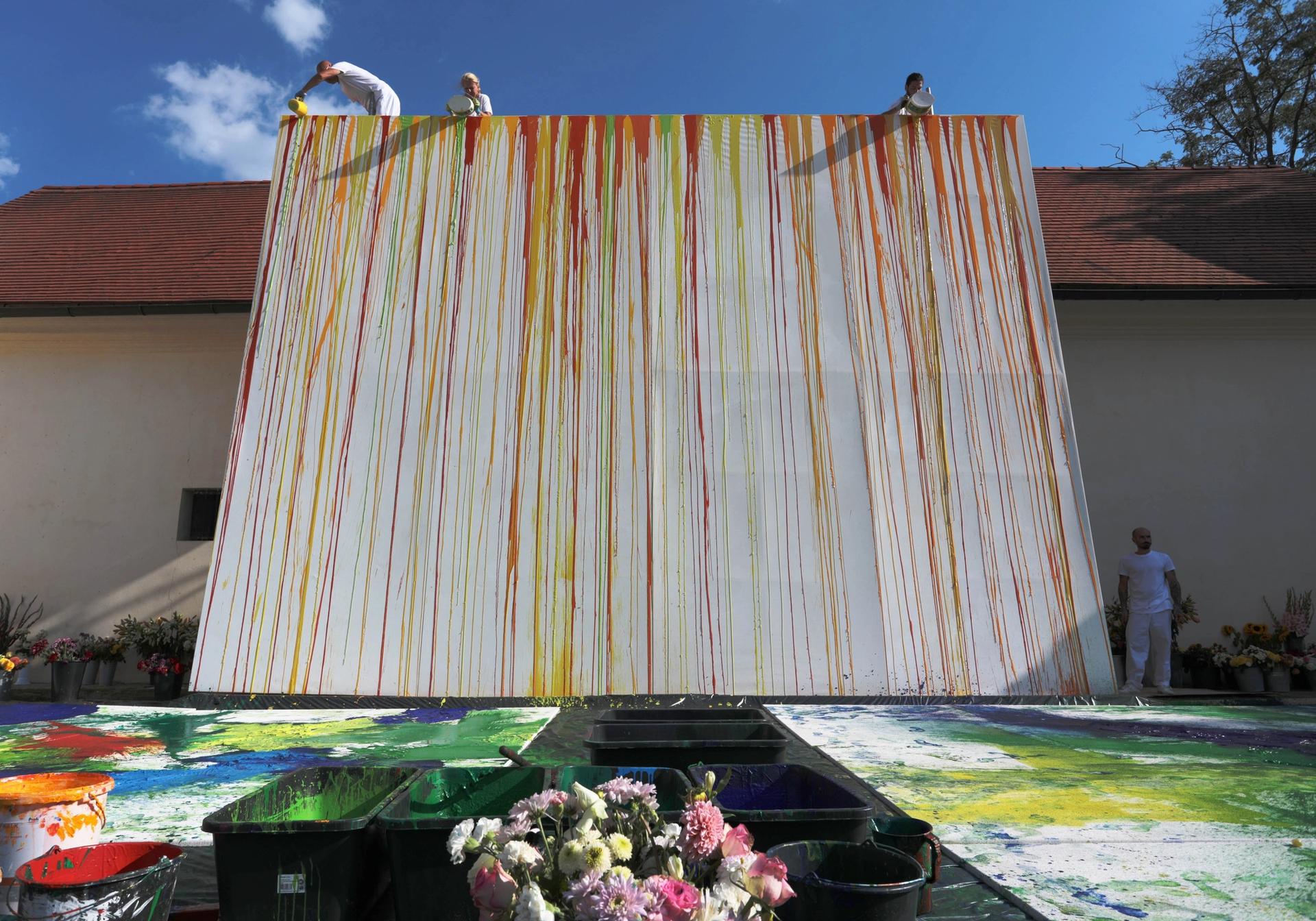
Hermann Nitsch and the Orgies Mysteries Theater's 6-Day Play (2022), day 2 Photo: © Hermann Nitsch GmbH, photo: FEYERL
Lisa Kandlhofer, Nitsch’s gallerist for the past three years, seems to think so; she says his legacy is still alive among the young international artists she works with. But Nahrer thinks his presence is missing: “He always had magnificence in mind. Like a football coach, he was never satisfied and would stop and correct the actors live.” Compared to 1998, where an ox was slaughtered at dawn, perhaps this can be seen an overture of his life’s work—rather than a sequel. For those not part of his entourage, or first-time viewers like me, it is unnerving to think that this performance—which felt cruel and dehumanising but also fleshy and real—is a toned-down version. It puts into question what true transgressiveness in art could look like today.


